Are you a big lover of succulents and want as many exquisite specimens as possible in your home or garden? Look no further! Haworthiopsis fasciata a.k.a. Fasciated Haworthia is a must-have in the plant family of every respectable succulent grower. Just wait until you get to know them!
Haworthiopsis fasciata (syn. Haworthia Fasciata), commonly known as Fasciated Haworthia or Zebra Haworthia, is an absolutely irresistible and hypnotic species of succulents. Member of the Asphodelaceae family, this succulent is native to the Eastern Cape Province of South Africa. Although it is a pretty rare specimen in the gardening world, the succulent still enjoys lots of popularity as an ornamental plant around the world.
Haworthiopsis fasciata surprises us not only through its infinite beauty but also with its super low-demanding nature in general. If you manage to become the owner of this lovely succulent, you will see that it can thrive with little to no effort on your part.
Keep reading to find out how easy to grow, care for, and propagate Zebra plant can be!
Zebra Plant Quick Facts
| Fact Category | Fact Details |
|---|---|
| Common Name | Fasciated Haworthia, Zebra Haworthia |
| Scientific Name | Haworthiopsis fasciata |
| Family | Asphodelaceae |
| Native to | Eastern Cape Province, South Africa |
| Plant Type | Evergreen perennial succulent |
| Size | Up to 7.2 inches (18 cm) in height, rosettes up to 6 inches (15 cm) in diameter |
| Growth Rate | Slow |
| Leaf Color | Green through dark red, with white lines or dots |
| Flowering | Summer, tiny tubular white flowers on a tall inflorescence |
| Sunlight | Bright, indirect light or semi-shade |
| Temperature | 60-85 °F (16-29 °C); cold-hardy in USDA zones 10a-11b |
| Soil | Acidic, well-draining cacti/succulent mix |
| Watering | Regularly, allowing soil to dry out completely between waterings |
| Propagation | Offsets |
| Toxicity | Non-toxic to humans and pets |
| Suitable for | Indoor and outdoor cultivation, desert gardens, succulent gardens, rock gardens, beds, borders, and unique pots |
About Zebra Plant
- Haworthiopsis fasciata looks very much like its close relative Haworthiopsis attenuata, which is why many people confuse them. In fact, most plants in cultivation that are labelled as Haworthiopsis fasciata are actually Haworthiopsis attenuate. But you don’t have to worry too much about this as both types are cute and have the same growth requirements.
- This succulent comes along with additional varieties and forms to choose from. The three interesting cultivars are H. fasciata var. fasciata (the common type), H. fasciata f. browniana (a form with green and dark red leaves), and H. fasciata f. patensie (which has a small, compact shape with red and light green leaves).
- The specific epithet “fasciata” comes from the word “fascia” which is the Latin for “band” or “strip”. The name refers to the eye-catching crowd of banded leaves that Haworthiopsis fasciata features.
- Haworthiopsis fasciata will not hesitate to show its dissatisfaction if it does not experience proper conditions. Yellow, white, or red leaves are a common sign that your succulent receives too much direct sunlight. On the other hand, dropping or shrivelling leaves may be the result of either under-watering or over-watering (rot).
- Zebra Haworthiopsis can make for a wonderful addition to various landscape decorations, such as desert gardens, succulent gardens, rock gardens, beds, and borders. It will also look very cute as outdoor ground covers or indoors as a houseplant in a unique pot. Just get creative!
- Haworthiopsis fasciata is a perfect companion plant to other species of ornamentals including Agave, Aloe, Baby Jade, Blue Chalk Sticks, Echeveria, Kalanchoe, Haworthia Cooperi, Living Stones, Sedum Stonecrops, Sedum ‘Little Missy’, Sempervivum, and other succulents and cacti with similar growing requirements.
- If you have curious children or furry friends in your company, we come with great news! Haworthiopsis fasciata is safe to grow anywhere near humans and animals, so you will not need to worry about your beloved pets or kids.
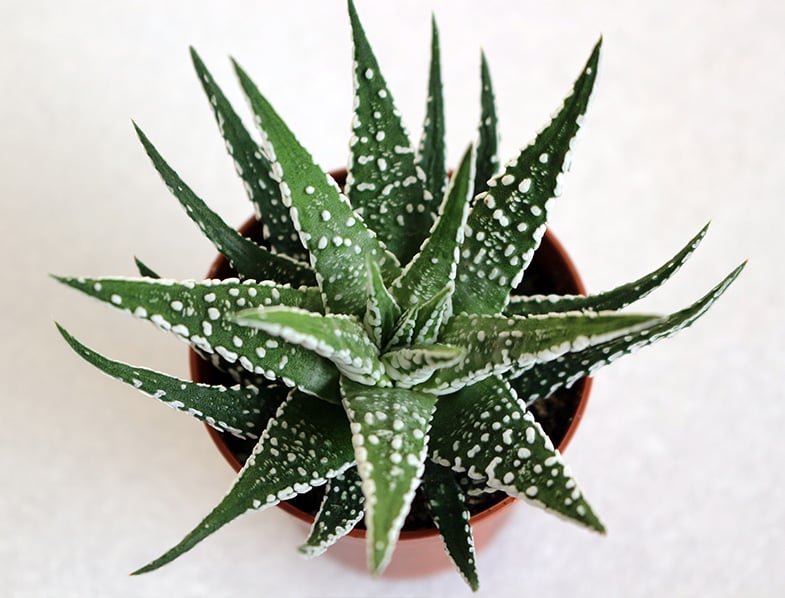
Zebra Plant Features: An Overview
- This plant belongs to the Haworthiopsis genus that contains exactly 18 species of succulents. It shares this genus with other gorgeous succulents like H. attenuata, H. coarctata, H. limifolia, H. koelmaniorum, H. venosa, H. nigra, H. viscosa, H. tessellata, H. glauca, and H. bruynsii.
- Haworthiopsis fasciata is an evergreen perennial succulent. It is a small-growing plant that can reach only up to 7.2 inches (18 cm) in height. In general, the succulent grows at a pretty slow pace.
- Fasciated Haworthia forms rosettes of thick, narrow, succulent, triangular, and green through dark red leaves. The rosettes can reach up to 6 inches (15 cm) in diameter and usually feature many white lines or dots on each leaf.
- The most particular distinction between H. fasciata and H. attenuata is the inside layer of the leaves. While H. attenuata has a wax inside its leaves, the ones of the H. fasciata are actually fibrous. Moreover, H. fasciata tends to curve inwards more.
- This succulent blooms during the summer months. It produces tiny, tubular, white flowers at the end of a long, slender, wood-like stem. The inflorescence can grow as tall as one foot (30 cm) and can exhibit shades of white, green, brown, or red.
- Once mature, Haworthiopsis fasciata may send offsets that can grow along with the parent plant just fine. The offsets are also a great propagation material.
Growing Zebra Plant
When it comes to lighting conditions, Haworthiopsis fasciata does not behave like most other species of succulents. In general, this succulent can tolerate less sunlight than others but will need brighter conditions to bring its leaf colouration under the spotlight. We recommend you keep your plant in a location where it can receive plenty of bright, indirect light both indoors and outdoors. In regions with harsh summers, H. fasciata will appreciate a semi-shaded spot.
Although Haworthiopsis fasciata can handle high levels of heat pretty well, the ideal temperatures range from 60 to 85 °F (16-29 °C) all year round. Winter-wise, this succulent is cold-hardy only in the USDA zones 10a through 11b. If the outdoor temperature drops below 30 °F (-1 °C) in autumn or winter, it is wise to bring your plant inside to protect it.
Fasciated Haworthia is typically carefree in terms of pests or fungal diseases. However, some intruders like mealybugs may find this succulent pretty attractive once in a while. These insects tend to suck the juice out of your plant’s leaves, affecting its overall health with time. If you notice any suspect presence on your Fasciated Haworthia, you can get rid of the pests by handpicking them or using an insecticidal spray.
- Haworthiopsis fasciata 'Big Band' - Haworthiopsis fasciata is native to South Africa, formerly known as Haworthia fasciata. It is small in size with a rosette of stiff and leaves in the shape of long triangles. Many white lines or dots on each dark green leaf are consistent with a zebra's characteristics. White flowers grow on the ends of slender straw-like stems in late summer and early fall
- Strong Root System - Growing in our California farm, every succulent is carefully nurtured by gardener expert. Each succulent is fully rooted in 4 inch starter planter with succulent & cacti soil mix. They are larger, better established and much more resilient than less-established succulents. The plant container and soil are included
- Easy to Care - Haworthiopsis fasciata is relatively easy to breed. It needs about 4 to 6 hours of direct sunlight per day, and the rest of the day, it can be partially shaded or does not need too much indirect light exposure. Therefore, it is suitable for a window where it can always enjoy sufficient indirect light, or outdoors and on a balcony
- Ideal Decor - With unique leaves, Haworthiopsis fasciata 'Big Band' is a great choice as decorative houseplant by a south-facing window. From kids to adults, from boy to girl, from women to old lady, everyone like it. Choosing Haworthiopsis fasciata 'Big Band' succulent plant bonsai as a unique sincere present for Valentine's Day or Mother's Day to you family, friends, colleagues, etc
- Important Notes - Succulents may vary from pictures shown as they are living plants and grow differently throughout the year. Once you receive the package, please take it inside the house soon. Succulents' leaves are very fragile and may fall off during long trip. If your plant is missing some leaves upon arrival, just know they will grow back over time
- About this item
- Flowers: wite to near white / Cold Hardy to 30 degrees.
- Can be grown outdoors or as an indoor houseplant.
- 6" Size Pot (shipped bare root - no pot or soil)
- Your plant will be similar in size to last photo. Color and shape may vary.
Last update on 2024-10-09 / Affiliate links / Images from Amazon Product Advertising API
- Light Requirements: Haworthiopsis fasciata thrives when it receives bright, indirect light throughout the day. A few hours of morning or late afternoon sun will also suit the plant. Avoid exposing the succulent to harsh midday sun, as it may scorch the leaves.
- Fertilization: Feed your Haworthiopsis fasciata with a diluted cactus fertilizer (1:4 ratio of fertilizer to water) twice every year, in spring and summer. Alternatively, you can use a slow-release fertilizer formulated for succulents and cacti, applying it according to the manufacturer’s instructions.
- Pot Material: Choose a pot made of materials like terracotta or ceramic for your Haworthiopsis fasciata. These materials promote better moisture control and aeration, preventing the roots from sitting in soggy conditions.
- Pest Control: To keep mealybugs and other potential pests at bay, consider using organic pest control options like neem oil or insecticidal soap. Apply the chosen solution according to the label instructions, ensuring thorough coverage of the plant. Monitor your Haworthiopsis fasciata closely and repeat the treatment if necessary.
- Signs of Overwatering or Underwatering: Overwatered Haworthiopsis fasciata may exhibit symptoms like yellowing or softening of the leaves. Underwatered plants, on the other hand, might have wrinkled or shriveled leaves. Adjust your watering schedule based on these signs to ensure your succulent receives the proper amount of moisture.
Planting Haworthiopsis Fasciata
In its natural habitat, Haworthiopsis fasciata grows in acidic sands. For optimal results, you should plant your succulent in a substrate that mimics that particular soil type. Since this succulent can suffer tremendously in soggy conditions, we suggest you look for a growing medium that also comes with very sharp drainage. The perfect soil to plant your H. fasciata in is usually a commercial mix designed for succulents and cacti.
Because Haworthiopsis fasciata is a slow-growing succulent, you will not need to provide yours with fertilizers too often. Make sure you feed your succulent with a diluted cactus fertilizer twice every year in spring and summer.
Haworthiopsis fasciata performs best in containers that have one or more drainage holes at the bottom. Once it reaches maturity, the species may send tiny offsets around its base and spread in width with time. You can avoid overcrowding your future cluster of succulents by planting the mother plant in a wider pot from the very beginning.
Due to its tendency to grow at a very slow pace, this succulent will not require frequent repotting. When your plant starts to outgrow its pot, you can transplant it in a slightly larger one in either spring or early summer. Likewise, you can repot your H. fasciata in another pot if you want to spoil it with a fresh growing medium.
Watering Zebra Plant
Like with most species of succulents, Haworthiopsis fasciata grows at its best with regular moisture but not waterlogged. In fact, over-watering your plant may kill it in little to no time. When this succulent receives too much water, the roots will eventually die off, causing the leaves to stop getting the needed moisture. But we have a way to avoid this unpleasant event!
Be careful and water your Haworthiopsis fasciata only when its soil has dried out entirely. Thanks to its succulent leaves, this easy-going plant becomes fairly tolerant of drought for long periods. It can store large amounts of water, making them excellent companions for beginners or those growers that forget about their plants occasionally. Oops!
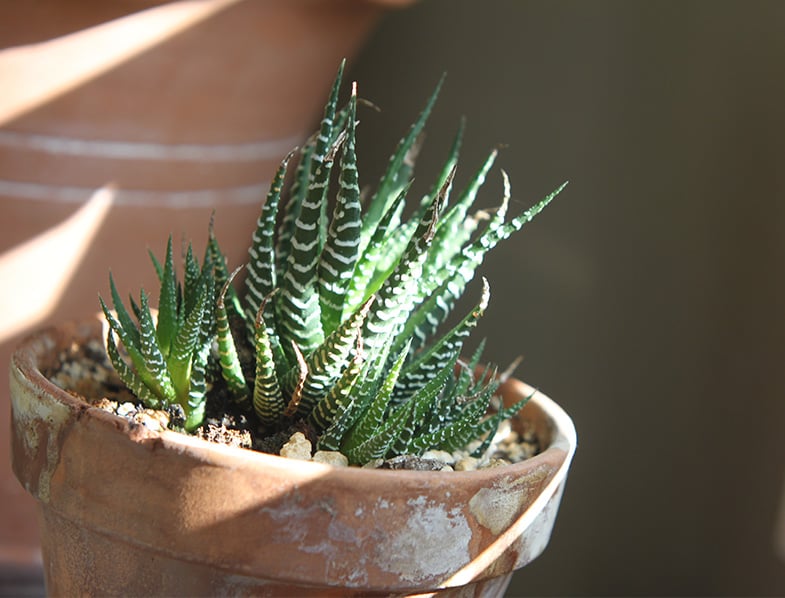
Propagating Zebra Plant
The easiest and most efficient method to propagate Haworthiopsis fasciata plants is through offsets. If you want more of these adorable succulents to keep you company, no worries! All you have to do is wait for the mother plant to produce some offsets. When this happens, you can get into action!
First things first, you must remove the offsets from the mother plant using a sharp, sterilized knife. Make sure you cut the offsets as close to the parent stem as you can. Moreover, in the process of cutting, try to also include as many roots as possible for guaranteed results. Once you have the offsets removed from the mother plant, allow them to dry for a day or so on a paper towel.
After this period, you can plant each H. fasciata offset in its own small pot filled with fresh succulents and cacti potting mix. Water the offsets whenever the soil has dried out completely and wait for the magic to happen. If you do not have enough room for all the offsets, you can always grow some of them for your succulent-loving family members or friends, then gift them!
In Conclusion
If you are looking for a tiny, but spectacular succulent to complete your collection, Haworthiopsis fasciata a.k.a. Fasciated Haworthia is the one that deserves the spot! As long as you provide it with bright, indirect light, mid-warm temperatures, a well-draining cacti/succulent mix, and regular watering, this succulent will be more than happy. And what can be more exciting than having a succulent that is both bewitching and easy-going around?
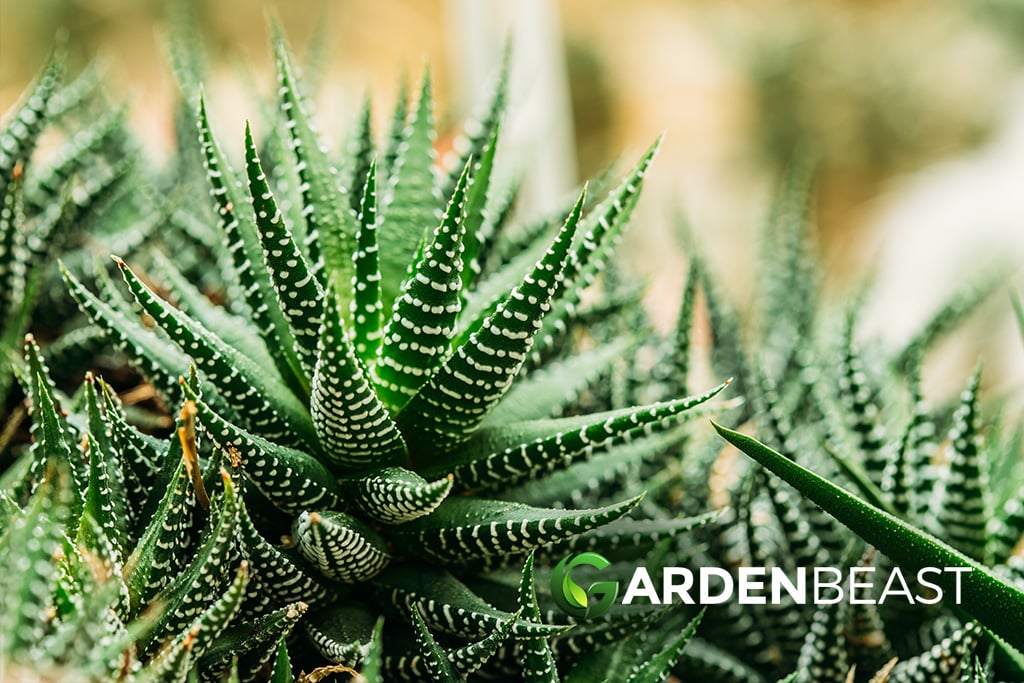
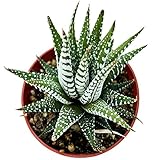
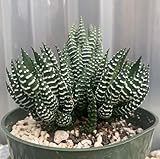
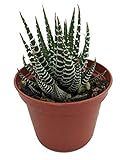
1 Comment
Why do I have white mushrooms growing in my Haworthiopsis fasciitis plant?